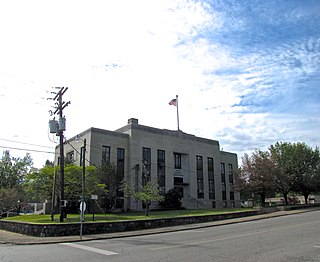
Polk County is a county located in the southeastern corner of the U.S. state of Tennessee. As of the 2020 United States census, its population was 17,544. Its county seat is Benton. The county was created on November 28, 1839, from parts of Bradley and McMinn counties, after final removal of most Cherokee from the region that year. The county was named after then-governor James K. Polk. Polk County is included in the Cleveland, Tennessee Metropolitan Area Statistical Area, which is also included in the Chattanooga–Cleveland–Dalton, TN–GA–AL Combined Statistical Area.

Charleston is a city in Bradley County, Tennessee, United States. The population was 664 at the 2020 census. It is included in the Cleveland Metropolitan Statistical Area.
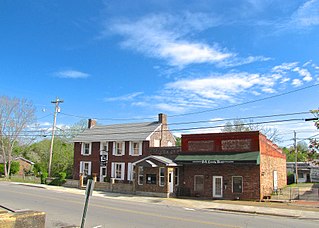
Benton is a town in Polk County, Tennessee, United States. The population was 1,532 at the 2020 census. It is the county seat.

Copperhill is a city in Polk County, Tennessee, United States. The population was 443 at the 2020 census. It is included in the Cleveland Metropolitan Statistical Area.

The Toccoa River and Ocoee River are the names in use for a single 93-mile-long (150 km) river that flows northwestward through the southern Appalachian Mountains of the southeastern United States. It is a tributary of the Hiwassee River, which it joins in Polk County, Tennessee, near the town of Benton. Three power generating dams are operated along it.
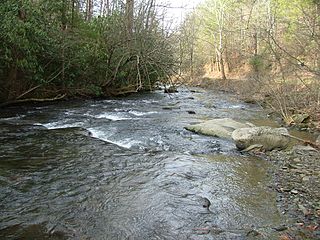
The North River of Tennessee is a major tributary of the Tellico River. It rises in the Unicoi Range, which are geologically related to the Smoky Mountains to the north, in Monroe County, Tennessee inside Cherokee National Forest. Its entire course is located in a very scenic, very isolated area; for the vast majority of its length it is parallel by Forest Road 217, also called North River Road, managed by the Forest Service of the United States Department of Agriculture. It flows very roughly east to west. There is a Forest Service campground located near its confluence with the Tellico, which is located upstream and opposite that of the Tellico's other major tributary, the Bald River.

The Hiwassee River originates from a spring on the north slope of Rocky Mountain in Towns County in the northern area of the State of Georgia. It flows northward into North Carolina before turning westward into Tennessee, flowing into the Tennessee River a few miles west of what is now State Route 58 in Meigs County, Tennessee. The river is about 147 miles (237 km) long.

The Tennessee Valley Railroad Museum is a railroad museum and heritage railroad in Chattanooga, Tennessee.
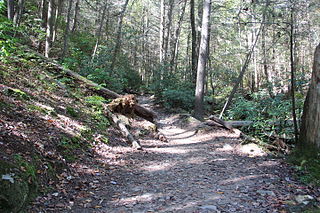
The Benton MacKaye Trail or BMT is a footpath nearly 300 miles (480 km) in length in the Appalachian Mountains in the southeastern United States and is blazed by a white diamond, 5″ across by 7″ tall. The hiking trail was created and is maintained by the Benton MacKaye Trail Association, and it is named for Benton MacKaye, the Massachusetts forester and regional planner who first had the idea for the Appalachian Trail in 1921.

Great Hiwassee was an important Overhill settlement from the late 17th through the early 19th centuries. It was located on the Hiwassee River in present-day Polk County, Tennessee, on the north bank of the river where modern U.S. Route 411 crosses the river. The site is now part of the Tennessee Forestry Division's East Tennessee Nursery.
Conasauga Creek is a 42.8-mile-long (68.9 km) tributary stream of the Hiwassee River, located in southeast Tennessee, United States. It is not to be confused with the nearby Conasauga River.
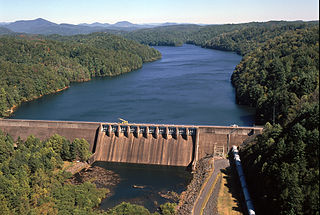
Apalachia Dam is a hydroelectric dam on the Hiwassee River in Cherokee County, in the U.S. state of North Carolina. The dam is the lowermost of three dams on the river owned and operated by the Tennessee Valley Authority, which built the dam in the early 1940s to provide emergency power for aluminum production during World War II. While the dam is in North Carolina, an 8.3-mile (13.4 km) underground conduit carries water from the dam's reservoir to the powerhouse located 12 miles (19 km) downstream across the state line in Polk County, Tennessee. The dam and associated infrastructure were listed on the National Register of Historic Places in 2017. Apalachia Dam is classified by the U.S. Army Corps of Engineers as a high-hazard dam, meaning a dam failure may pose a deadly threat to nearby residents. The dam's condition is not made available to the public due to security concerns.
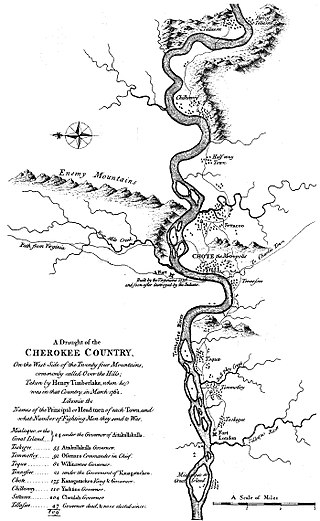
Overhill Cherokee was the term for the Cherokee people located in their historic settlements in what is now the U.S. state of Tennessee in the Southeastern United States, on the western side of the Appalachian Mountains. This name was used by 18th-century European traders and explorers from British colonies along the Atlantic coast, as they had to cross the mountains to reach these settlements.
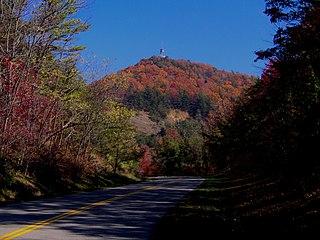
Chilhowee Mountain is the name of two non-contiguous ridges in the U.S. state of Tennessee. The ridges run in a northeastern to southwestern direction. The northern section is at the outer edge of the Great Smoky Mountains, stretching from the Little Pigeon River watershed at the northeast to the Little Tennessee River and Chilhowee Dam to the southwest. The southern section runs from Tellico Plains to the Ocoee River in Polk County. The northern section is traversed by the Foothills Parkway from Walland to its terminus near Chilhowee.

Ocoee Dam No. 3 is a hydroelectric dam on the Ocoee River in Polk County, in the U.S. state of Tennessee. It is one of four dams on the Toccoa/Ocoee River owned and operated by the Tennessee Valley Authority, which built the dam in the early 1940s to meet emergency demands for electricity during World War II. The dam impounds the 360-acre (150 ha) Ocoee No. 3 Reservoir, which stretches 11 miles (18 km) upriver to the Tennessee-Georgia state line. Ocoee No. 3's powerhouse is actually located several miles downstream from the dam, and is fed by a 2.5-mile (4.0 km) conduit that carries water to it from the reservoir.

The Ocoee Whitewater Center, near Ducktown, Tennessee, United States, was the canoe slalom venue for the 1996 Summer Olympics in Atlanta, and is the only in-river course to be used for Olympic slalom competition. A 1,640 foot stretch of the Upper Ocoee River was narrowed by two-thirds to create the drops and eddies needed for a slalom course. Today, the course is watered only on summer weekends, 34 days a year, for use by guided rafts and private boaters. When the river has water, 24 commercial rafting companies take more than 750 raft passengers through the course each day.

Ocoee is an unincorporated community in Polk County, Tennessee, United States and named after the Cherokee settlement located in the area. Ocoee had a post office until it was severely damaged by a tornado. It still retains its own ZIP code 37361.

State Route 33 is a primary and secondary route in East Tennessee. It runs 176 miles, from the Georgia state line in Polk County, northeast to the Virginia state line north of Kyles Ford in Hancock County. South of Maryville, SR 33 is a "hidden" route which shares a concurrency with US 411.

Upper Hiwassee Highlands is an American Viticultural Area (AVA) that straddles two counties in the southwestern corner of North Carolina, United States, adjacent to the Tennessee border across state lines into three counties of northern Georgia. It is located near the southern end of the Blue Ridge Mountains and expands over portions of Cherokee and Clay Counties, North Carolina into Fannin, Towns and Union Counties, Georgia. The appellation was recognized, as the Georgia's initial and North Carolina's 4th AVA, on August 18, 2014 by the Alcohol and Tobacco Tax and Trade Bureau (TTB), Treasury after reviewing the petition submitted by Eric Carlson, owner of Calaboose Cellars, on behalf of himself and members of the Vineyard and Winery Operators of the Upper Hiwassee River Basin group, proposing the establishment of the AVA to be designated "Upper Hiwassee Highlands."

State Route 30 is an east-west state highway in the central and eastern portions of the U.S. state of Tennessee. It runs generally west to east, connecting McMinnville in Warren County with Parksville along the Ocoee River in Polk County. It crosses several major geographic features in Tennessee, including the Cumberland Plateau, the Sequatchie Valley, the Tennessee River, and parts of the Cherokee National Forest.



















